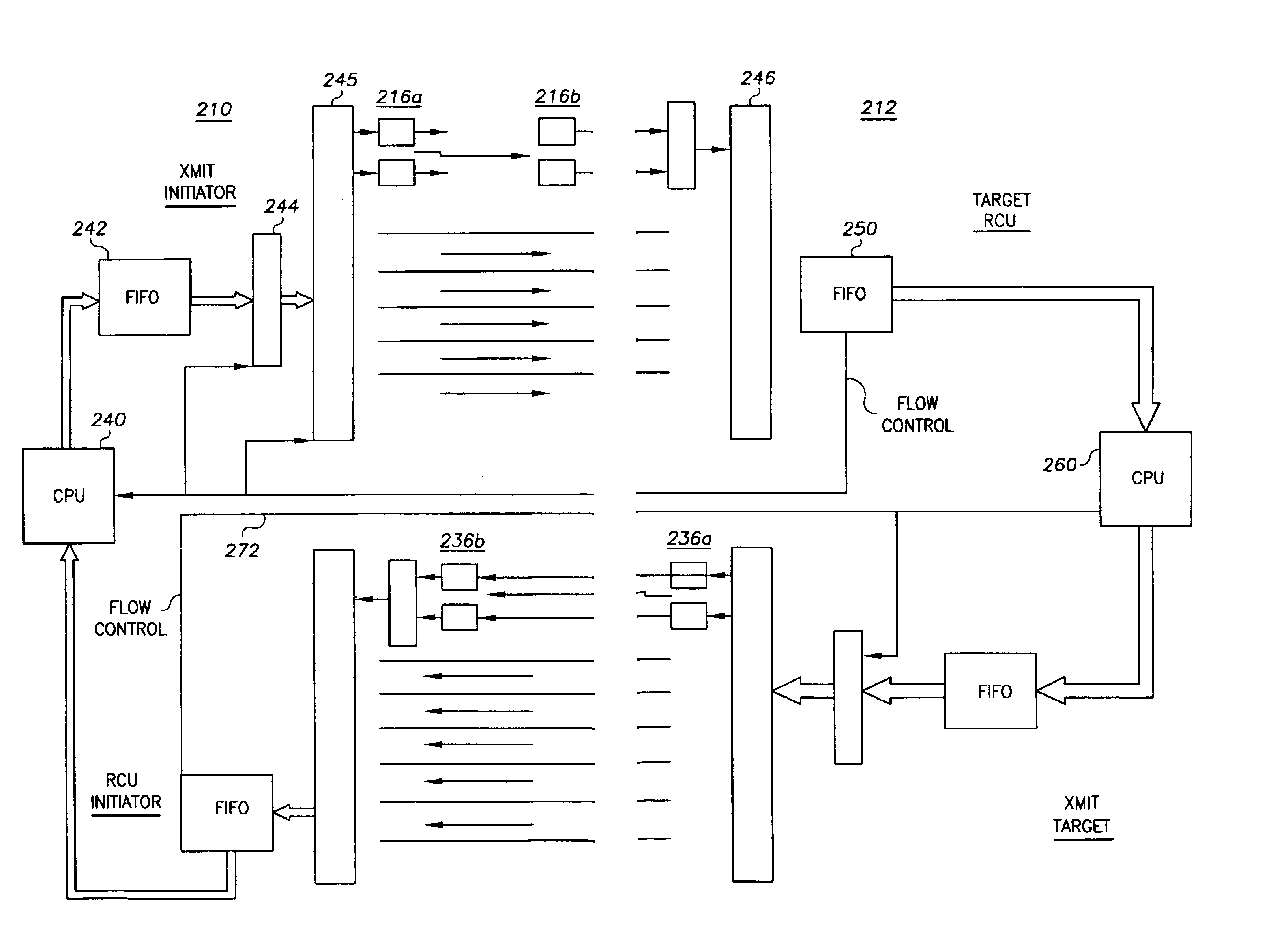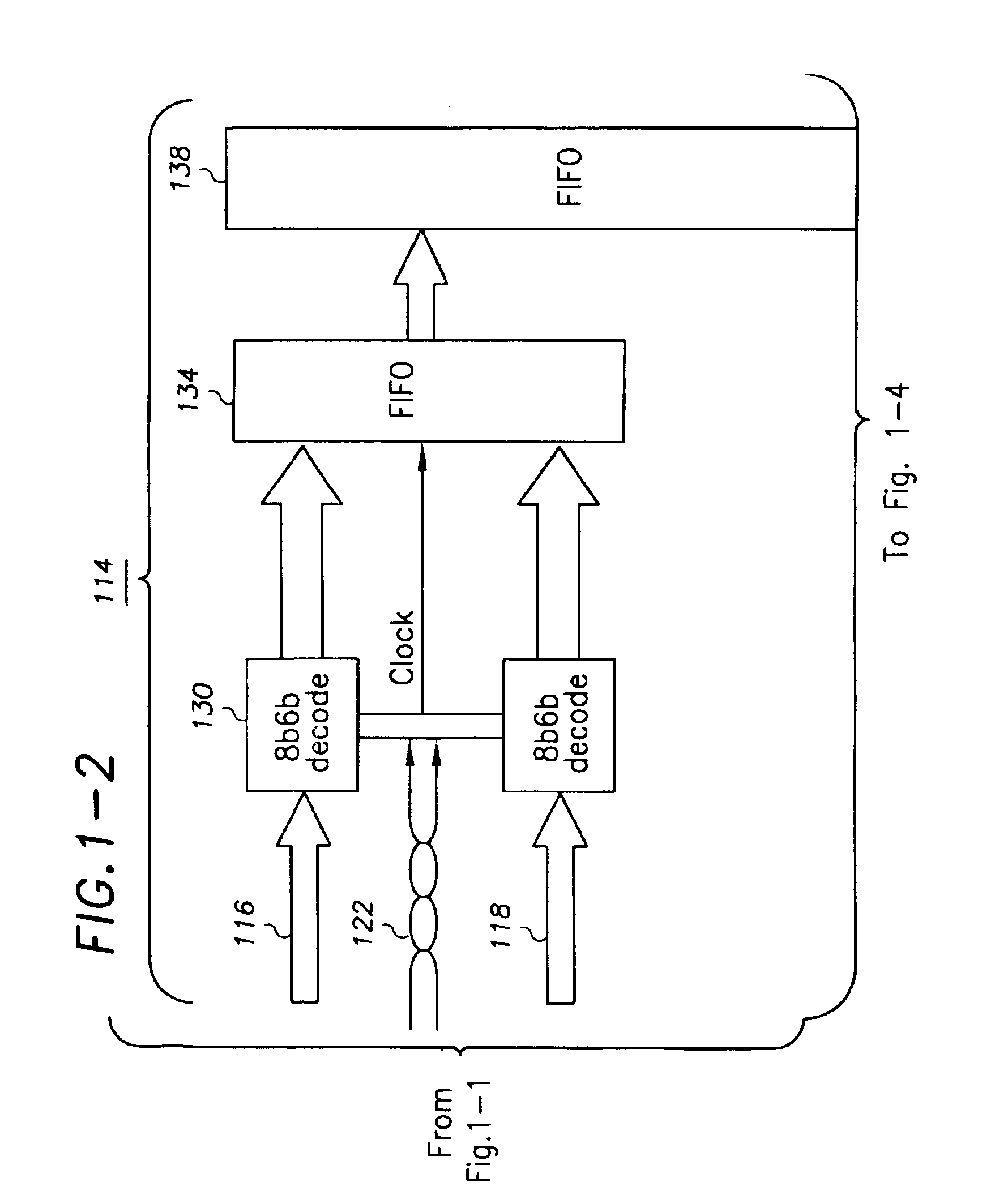Parallel data communication realignment of data sent in multiple groups
a data communication and parallel technology, applied in the field of data communication, can solve the problems of line impedance and length, anticipated amount of time skew, and sensitive to practicable limitations in terms of implementation space and available operating power, and overcome the more significant skew-caused misalignment, and the effect of small data skew
- Summary
- Abstract
- Description
- Claims
- Application Information
AI Technical Summary
Benefits of technology
Problems solved by technology
Method used
Image
Examples
Embodiment Construction
[0020]The present invention is believed to be generally applicable to methods and arrangements for transferring data between two modules (functional blocks) intercoupled by a parallel data communication path. The invention has been found to be particularly advantageous for high-speed data transfer applications susceptible to data-skew errors. Examples of such applications include, among others: SSTL (stub series transceiver / terminated logic); RSL (Rambus Signaling Logic) interfaces; closely-connected applications such as where the parallel data communication path intercouples the two modules on a single-chip; and off-board high-speed communication between chips typically situated immediately adjacent each other on the same printed circuit board. A specific example of an off-board high-speed communication between chips is described in U.S. patent application Ser. No. 09 / 215,942, filed on Dec. 18, 1998, now U.S. Pat. No. 6,347,395, incorporated herein by reference. While the present i...
PUM
 Login to View More
Login to View More Abstract
Description
Claims
Application Information
 Login to View More
Login to View More - R&D
- Intellectual Property
- Life Sciences
- Materials
- Tech Scout
- Unparalleled Data Quality
- Higher Quality Content
- 60% Fewer Hallucinations
Browse by: Latest US Patents, China's latest patents, Technical Efficacy Thesaurus, Application Domain, Technology Topic, Popular Technical Reports.
© 2025 PatSnap. All rights reserved.Legal|Privacy policy|Modern Slavery Act Transparency Statement|Sitemap|About US| Contact US: help@patsnap.com



